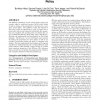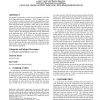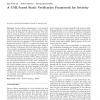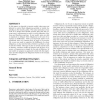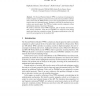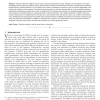TISSEC
2010
13 years 6 months ago
2010
The SELinux mandatory access control (MAC) policy has recently added a multi-level security (MLS) model which is able to express a fine granularity of control over a subject'...
SIMULATION
2010
13 years 6 months ago
2010
We introduce and describe a novel network simulation tool called NeSSi (Network Security Simulator). NeSSi incorporates a variety of features relevant to network security distingu...
RE
2010
Springer
13 years 6 months ago
2010
Springer
Secure software engineering is a new research area that has been proposed to address security issues during the development of software systems. This new area of research advocates...
MEDES
2010
ACM
13 years 6 months ago
2010
ACM
In this paper, we describe a security model where users are allowed to control their obligations partially or totally, depending on the security policy. The main motivation of our...
IHI
2010
13 years 6 months ago
2010
Modern information technology is increasingly used in healthcare with the goal to improve and enhance medical services and to reduce costs. In this context, the outsourcing of com...
IFIP
2010
Springer
13 years 6 months ago
2010
Springer
Service Oriented Computing (SOC) is a programming paradigm aiming at characterising Service Networks. Services are entities waiting for clients requests and they often result from ...
IFIP
2010
Springer
13 years 6 months ago
2010
Springer
The Trusted Platform Module (TPM) is a hardware chip designed to enable computers to achieve a greater level of security than is possible in software alone. To this end, the TPM pr...
TMC
2011
13 years 6 months ago
2011
—Vehicular networks (VANETs) can be used to improve transportation security, reliability, and management. This paper investigates security aspects of VANETs within a game-theoret...
TIT
2011
13 years 6 months ago
2011
Abstract. In 1998, Blaze, Bleumer, and Strauss proposed a cryptographic primitive called proxy re-encryption, in which a proxy transforms – without seeing the corresponding plain...
